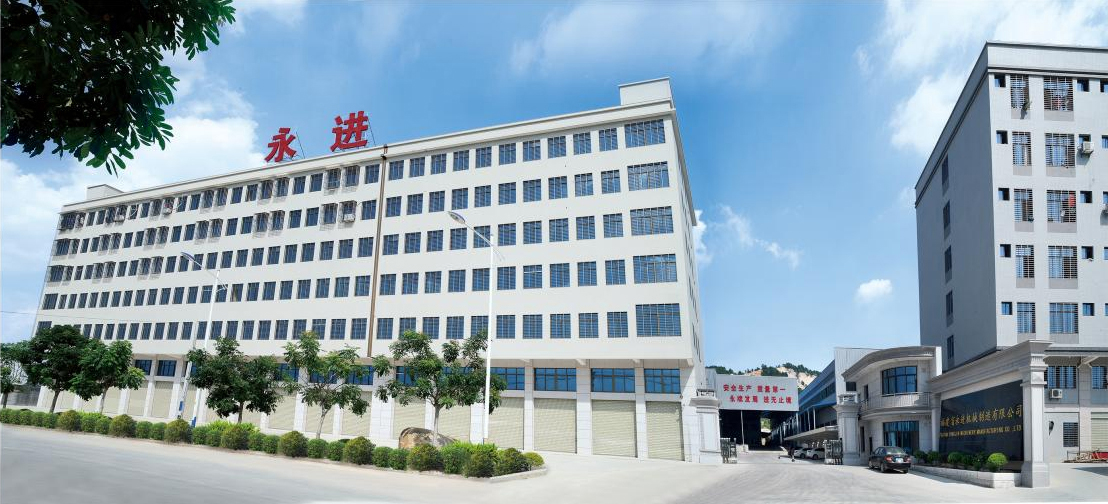In the next few years, the demand for the Brazilian track shoe market will benefit from the large-scale expansion of agriculture, technological upgrading in the mining industry, and accelerated infrastructure investment. Meanwhile, it needs to address the challenges of stricter environmental policies and international trade barriers. The following analysis is carried out from dimensions such as key driving factors, growth potential of segmented markets, and policy & competitive landscape:

Core Driving Factors and Market Size Forecast
1. Deepening of Agricultural Mechanization and Structural Upgrading
As the world’s largest soybean exporter, Brazil’s mechanization rate in major soybean-producing regions reached 90% in 2024, with imports of rubber-track harvesters increasing by 25% annually. With the expansion of farm scales in midwestern states such as Mato Grosso (averaging 3,400 hectares), tractors with 81-130 horsepower account for 46% of the agricultural machinery market, directly driving the demand for rubber track shoes suitable for medium and large agricultural machinery. The global agricultural machinery rubber track market is expected to expand at a CAGR of 7% (2025-2031). As a core growth pole, Brazil will undertake more export orders from China (exports to Brazil increased by 16.8% in 2024). In addition, the government’s farm machinery trade-in subsidy policy (such as the growth of customized track orders in southern paddy fields in 2025) and smart agricultural machinery pilots (shipments of tracks supporting autonomous tractors increased by 15.3% annually) further release the demand for high-end products.
2. Technological Innovation and Green Transition in the Mining Industry
In the BRL 67 billion (approximately USD 12.3 billion) investment plan of mining giants such as Vale in Minas Gerais, autonomous trucks and circular mining technology are clearly identified as key focuses. As a core component of mining dump trucks, the demand for steel track shoes will grow in tandem with equipment upgrades (such as the 15 million tons of new iron ore production capacity in the Capim Néris mining area). Furthermore, the promotion of tailings filter pressing and dry stacking technology (aiming to reduce the proportion of tailings dams from 30% to 20%) requires track shoes to have higher wear resistance and corrosion resistance, driving product structure upgrading. Imports of hydraulic excavators above 30 tons in Brazil surged by 24% in 2024, directly boosting the demand for supporting track shoes.
3. Infrastructure Investment and Demand for Construction Machinery
The BRL 7 billion Santos-Guarujá Cross-Sea Tunnel project (Brazil’s first immersed tube tunnel) and the BRL 1.7 trillion national logistics plan under Brazil’s Novo PAC (New Growth Acceleration Program) will drive the procurement volume of construction machinery. Infrastructure tender volume in the first half of 2024 reached BRL 189 billion, fueling explosive growth in demand for road machinery and port equipment. China’s exports of construction machinery to Brazil reached USD 500 million in Q1 2025, with excavators and loaders accounting for over 30%, leading to a corresponding rise in demand for supporting track shoes. Sobratema predicts that demand for non-small hydraulic excavators in Brazil’s construction industry will exceed 10,500 units in 2025, further supporting the track shoe market.
Growth Potential of Segmented Markets and Technological Trends
1. Rubber Track Shoes: Agriculture-led, Continuous Penetration Rate Improvement
The agricultural sector accounts for 67% of rubber track shoe applications. Its advantages of low ground pressure and shock absorption meet the operational needs of Brazil’s hilly and mountainous areas. Among China’s rubber track shoe exports to Brazil in 2024, the proportion of customized products with 22% higher tear resistance and a service life extended to over 2,800 hours increased significantly. With the promotion of black soil protection projects and smart agricultural machinery, the assembly rate of rubber tracks in tractors is expected to rise from 28% in 2020 to 46% in 2025. In addition, the electrification transformation of garden machinery (19% share) and small engineering vehicles (14% share) (such as electric lawnmowers) will stimulate demand for lightweight rubber tracks.
2. Steel Track Shoes: Rigid Demand from Mining and Construction Machinery
The mining industry is the main market for steel track shoes. Autonomous trucks (such as 5 pilot units in Vale’s Capim Néris mining area) and circular mining equipment of enterprises like Vale require high-strength steel tracks. Although the EU has launched anti-dumping investigations into Chinese steel track shoes, Brazil has not followed suit. In the short term, Chinese exports will still occupy a share (accounting for 50% of Brazil’s excavator imports in 2024). In the construction machinery sector, imports of hydraulic excavators above 30 tons increased by 24%, driving demand for large-size steel tracks. Urban infrastructure projects (such as São Paulo Metro Line 6) require wear-resistant and corrosion-resistant special track shoes.
3. Environmental Protection and Intelligence Driving Product Upgrades
Brazil’s National Environmental Policy requires mining projects to obtain environmental permits (including preliminary, construction, and operation phases), promoting the development of track shoes towards low noise and recyclability. Chinese enterprises such as Zhongce Rubber have piloted nano-reinforced rubber composites and recyclable rubber materials, which are expected to be mass-produced in 2025, reducing unit costs and enhancing international competitiveness. In terms of intelligence, track shoes integrated with sensors (such as monitoring wear status) have begun testing in autonomous agricultural machinery and may become standard equipment in the high-end market in the future.
Policy Environment and Competitive Landscape
1. Trade Policies and Localized Production
Brazil’s import tariff system includes import duties (0-35%), Industrial Products Tax (IPI), State Value-Added Tax (ICMS), and Federal Supplementary Taxes (PIS/COFINS), with a combined tax rate of up to 66%. Although steel track shoes have not been included in the anti-dumping scope, the Plano Brasil Soberano (Sovereign Brazil Plan) provides BRL 30 billion in credit support for local manufacturing, which may prompt local enterprises such as Caterpillar (with a market share of over 30% in Brazil) to expand track shoe production capacity. Chinese enterprises such as Sany Heavy Industry and XCMG have established production bases in Brazil, reducing tariff costs through localized assembly (such as Double Coin Group’s Thailand assembly center improving supply chain response efficiency by 30%).
2. Market Competition and Supply Chain Layout
The Brazilian track shoe market presents a pattern of “domination by international giants and penetration by Chinese enterprises”: John Deere, AGCO, etc., occupy 70% of the agricultural machinery market through local factories, while Chinese enterprises have risen rapidly in the construction machinery sector relying on cost-effectiveness (accounting for over 60% of Brazil’s loader imports in 2024). In terms of the supply chain, Brazil has sufficient local rubber raw material supply (natural rubber production in the Amazon region accounts for 15% of the world), but high-end steel still relies on imports (such as wear-resistant steel from Thyssenkrupp of Germany).
Risks and Challenges
1. Uncertainty in Economic Policies
Although the Plano Brasil Soberano launched by the Lula government in 2025 eases tariff pressure in the short term, long-term fiscal deficits may affect the sustainability of infrastructure investment. If policies shift to austerity after the 2026 elections, procurement of mining and agricultural machinery may be restrained.
2. Environmental Protection and Cost Pressure Mining projects need to bear reclamation costs (such as Vale’s BRL 5.2 billion investment in ecological restoration in the Capim Néris mining area), which may reduce equipment procurement budgets. In addition, the production of rubber track shoes relies on petroleum derivatives, and fluctuations in international oil prices will directly affect costs.
3. Technical Barriers and Intellectual Property Rights The nano-composite material technology for high-end rubber tracks is still controlled by enterprises such as Michelin and Bridgestone. Chinese enterprises need to break through patent restrictions to enter the high-end market.
Conclusion and Recommendations
Over the next 5 years, the Brazilian track shoe market is expected to grow at a CAGR of 6-8%. Agriculture and mining will remain the main driving forces, while construction machinery demand will fluctuate cyclically with infrastructure projects. Enterprises should focus on the following strategies:
1. Product Differentiation: Launch special rubber tracks for hilly and mountainous areas for agriculture, and develop wear-resistant steel tracks for the mining industry;
2. Localized Production: Avoid tariffs through joint ventures or mergers and acquisitions (such as Double Coin Group’s Thailand model) and layout close to major customers like Vale;
3. Technological Cooperation: Cooperate with Brazilian scientific research institutions to develop recyclable materials and smart tracks, responding to environmental protection and intelligence trends;
4. Policy Adaptation: Utilize the credit support of the Plano Brasil Soberano and participate in government-led large-scale projects (such as the national logistics plan).
Overall, the Brazilian track shoe market presents both opportunities and challenges. Enterprises with technical reserves and localized operation capabilities will be more competitive.
For track shoes inquiries, please contact us via the details below
Helly Fu
E-mail: [email protected]
Phone: +86 18750669913
Whatsapp: +86 18750669913
Post time: Nov-03-2025









